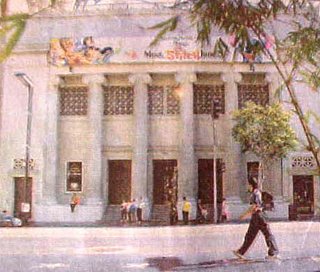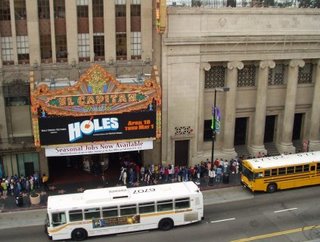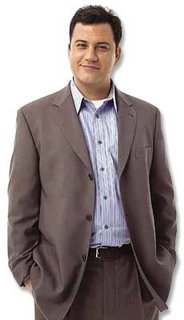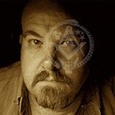 The Neoclassical El Capitan Entertainment Center
The Neoclassical El Capitan Entertainment Center
began life in 1921 as a Masonic temple.
These three things have no apparent connection but are actually intricately tied together in the legacy that is Hollywood.
I want to preface this by saying that my local lodge is #355, (formerly) Hollywood/West-Valley, under the Grand Lodge of California, in the United States. It is a growing lodge, with a large membership, where regularly there is a strong presence from the membership at each meeting. Recently, after substantial consideration, with backing from the active membership, my lodge changed its long multi-word name to simply “HOLLYWOOD” Masonic Lodge #355 (emphasis mine). Like many other lodges, it has changed over time with many mergers. The irony, not lost on many members, is that the newly named Hollywood lodge is about 20 miles away from Hollywood, over a hill and down a major Boulevard.
The reasons for change were simple. A shorter name is less clumsy and more fluid. The name HOLLYWOOD, presents a larger star appeal. And the new name reflects more of the lodge’s present participating membership’s origins. All of which are well intentioned for the strength and beauty of the lodge, but interestingly, I felt it completely ignored the history (and future) of the lodge.

Today, the magnificent edifice remains, across the street from the Mann’s (formerly Grauman’s) Chinese Theater and the newly built Kodak Theater (of American Idol fame). Built nearly 100 years ago, it served as an anchor to the community and the establishment of what we know today to be Hollywood and Highland.
But that is the building today. It had much more humble beginnings as an empty field before constructed began in 1921. From an L.A. Times article (undated from the original source) details its early history. It says:“The history of the Hollywood Lodge is inextricably linked to the landmarks that surround it. From 1903 to 1921, the members met in a structure in the approximate location of today's Kodak Theater. The first master, Gilbert F. Stevenson, lived nearby on a five-acre lemon ranch, which he later sold to a lodge brother who built the Egyptian Theater on the spot. That buyer was Charles E. Toberman, the whirlwind developer often referred to as the "father of Hollywood." Master of the Hollywood Lodge in 1914, Toberman was not only responsible for enticing Sid Grauman into Hollywood to create the Egyptian, Chinese and El Capitan theaters, but also for construction of the Hollywood Bowl, Pantages Theatre and the Max Factor Building. Before any of these developments stood along the boulevard, however, Toberman built the new lodge headquarters there, in 1922. At the time, the temple was one of the most substantial structures in Hollywood's sparse mix of buildings and citrus groves.”
“The architect appointed to the project was John C. Austin, who later worked on the Shrine Auditorium - also a Masonic headquarters - Griffith Observatory and City Hall. The new facility included a billiard room, pipe organ, ladies parlor, ballroom and lodge rooms, and was described in a contemporary account as "unsurpassed for beauty, attractiveness and richness of equipment." Rooms were appointed with custom oak furniture upholstered in Spanish leather and were adorned with the symbols of the order. In those early days when Hollywood was an independent city, the city attorney, city marshal, city treasurer and first mayor, George Dunlop, all were Masons. Arthur Letts, founder of the Broadway department store and artist Paul de Longpre, whose gallery and gardens drew many to the community, both were members, along with prominent judges and a significant number of bankers. The city's first newspaper and doctor's office were established by members, and the city's electric car service was owned and operated by brothers of the lodge.”The lodge building was ultimately sold in the late 1970’s because maintenance and seismic retrofitting became too costly with declining roles and revenue. The only option was to sell the building which heralded the memberships move to Tarzana. In later years the building was purchased by Buena Vista (Disney) and re-purposed in a variety venue next door to the El Capitan Theater. It ultimately became the home of the hit ABC show Jimmy Kimmel Live.
 For those of you who don’t already know, Jimmy Kimmel is a late night talk show host who follows the news program Nightline, on ABC. Kimmel’s show, offers late night talk with a sense of the every man, nightly hosting stars from all walks of entertainment. I wonder if Jimmy Kimmel ever thought he would be so closely linked to the fraternity of Freemasonry as he is today. It shouldn’t be a shock to him though; he was, after all, the host of the now infamous “Man Show” from Comedy Central.
For those of you who don’t already know, Jimmy Kimmel is a late night talk show host who follows the news program Nightline, on ABC. Kimmel’s show, offers late night talk with a sense of the every man, nightly hosting stars from all walks of entertainment. I wonder if Jimmy Kimmel ever thought he would be so closely linked to the fraternity of Freemasonry as he is today. It shouldn’t be a shock to him though; he was, after all, the host of the now infamous “Man Show” from Comedy Central.
The Hollywood Lodge absolutely represents an enduring legacy that Freemasonry has had on the history of tinsel town. Not likely in the ways intended by Toberman, but it still stands with the other landmarks around it as a testament to the presence of Freemasonry within the community. Had it not been for Toberman’s vision to place the lodge where he did, it’s unlikely that we would have the Nexus of Hollywood in the unique configuration it exists in today.
Looking forward, Hollywood Lodge, #355, now in its far away home of Tarzana, is reconnected to that glamorous and glitzy past of Hollywood. The connection was not physical but, in the echoes of memories from its past, like ghosts from a fading dream. The future of Hollywood Lodge does not lie in the glory of its past, but in the promise of its future in the far off hinterlands of L.A. Perhaps one day a noble band of brothers will reconvene the legacy of Hollywood Lodge, at home, in the bosom of Hollywood. But for now, it lives in the suburbs, like the rest of Los Angeles. And who knows, maybe even Jimmy Kimmel will want to join then.
Freemasonry | Freemason |Masonic | Hollywood | Hollywood Lodge | Jimmy Kimmel | ABC | Kodak Theater | Mann’s Chinese Theater | Charles E. Toberman | Sid Grauman | John C. Austin | Tarzana
Greg Stewart is the author of the book Masonic Traveler and is currently the editor and publisher of the digital Masonic Magazine FreemasonInformation.com. he is a lover of art, life, and family and is a transpolytheistic hermetic gnostic in love with the idea of transcendence. Frequently he writes about faith, philosophy, love, enlightenment, & life and is a firm believer in the mantra As Above So Below.
Connect with him on Twitter at http://twitter.com/masonictraveler or on his website http://www.freemasoninformation.com


Post new comment
Please Register or Login to post new comment.